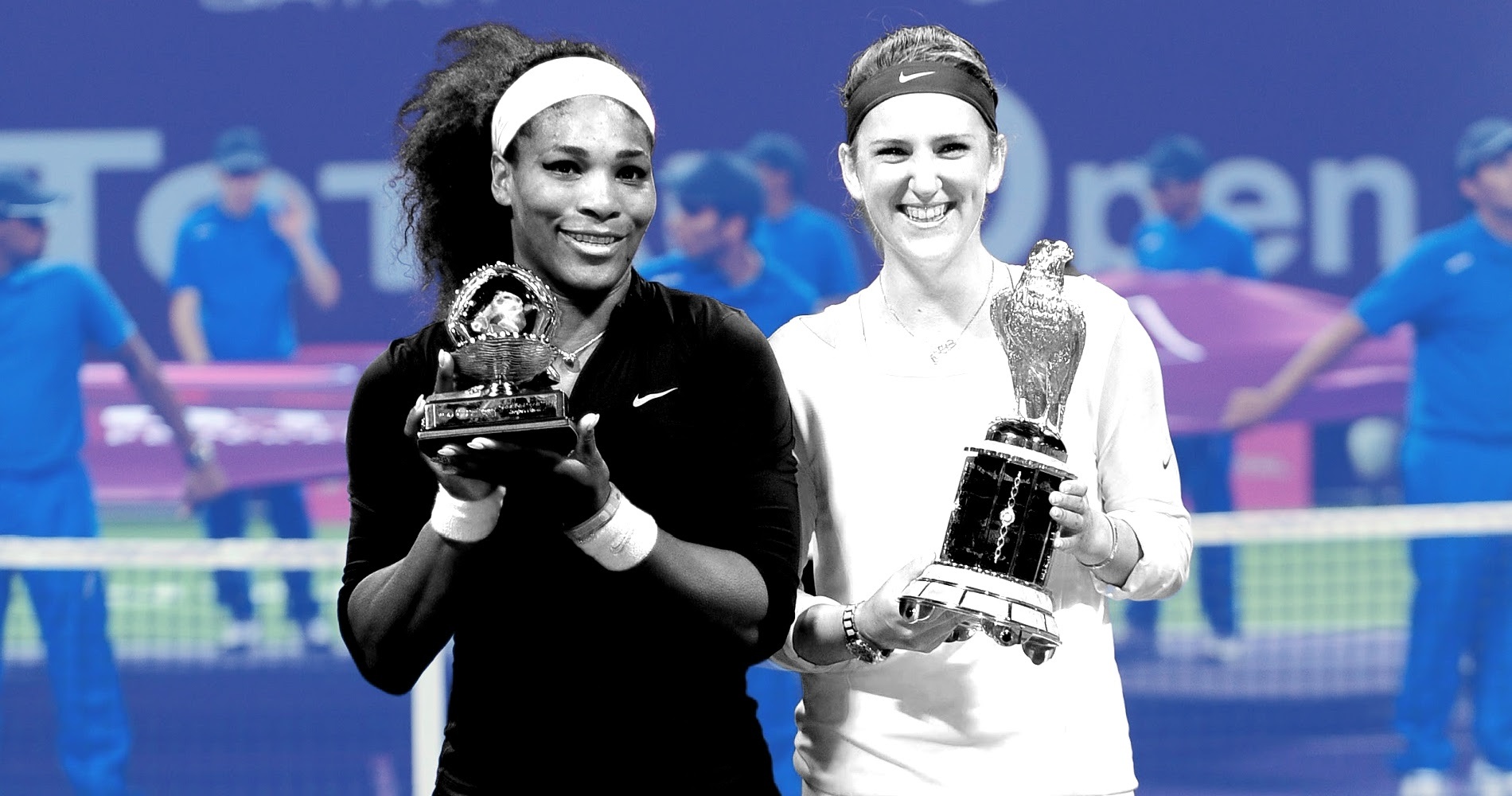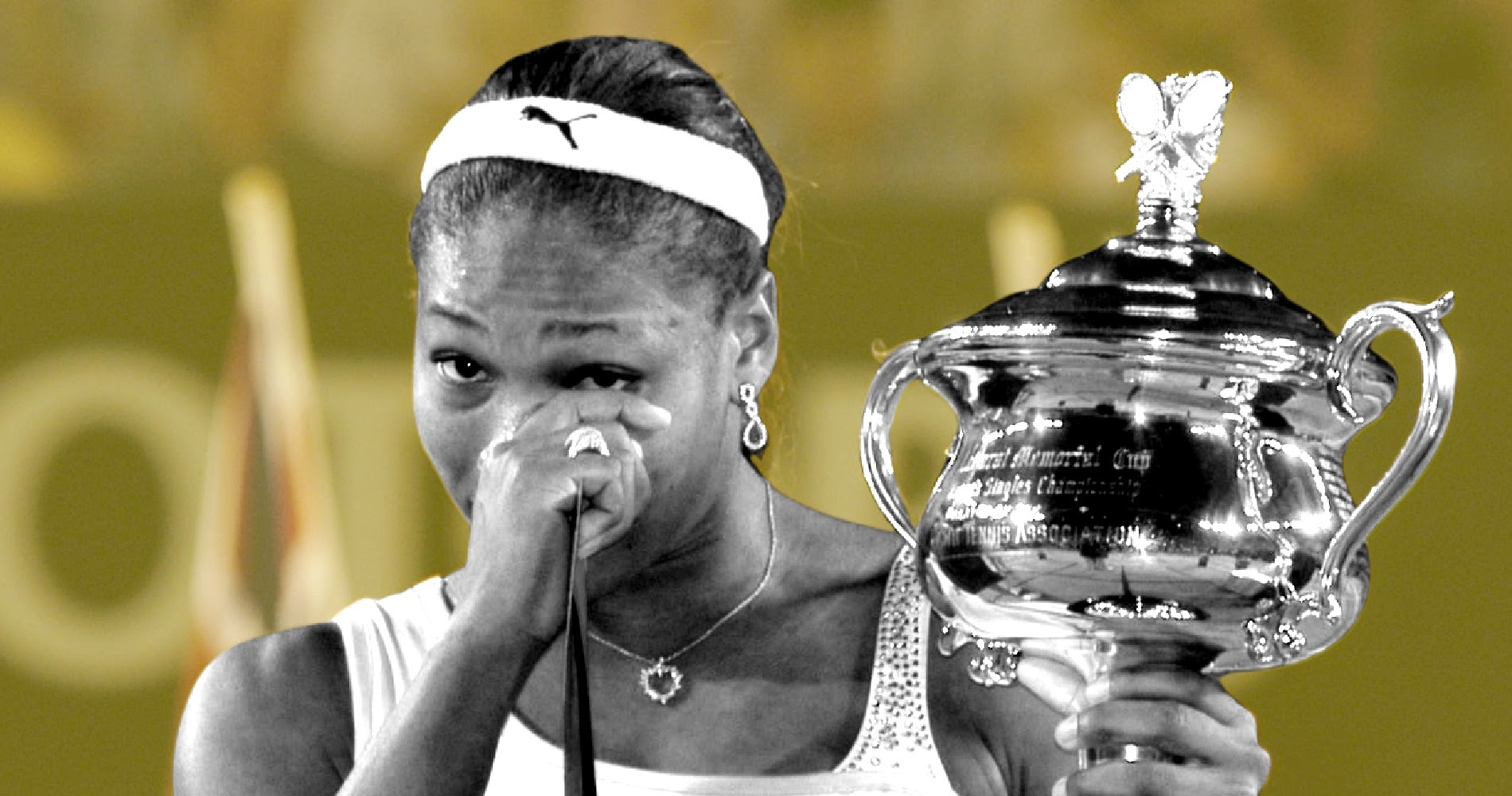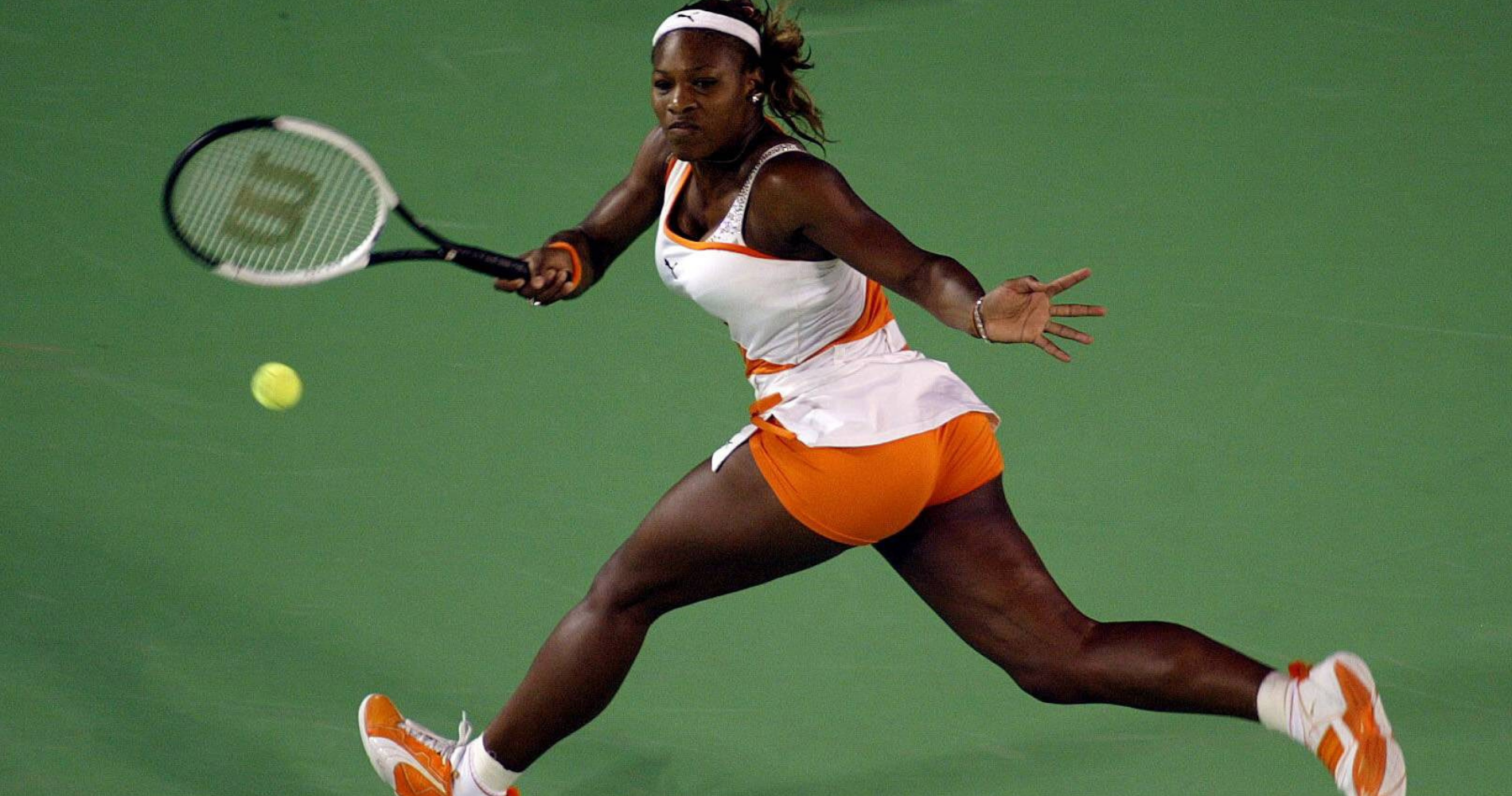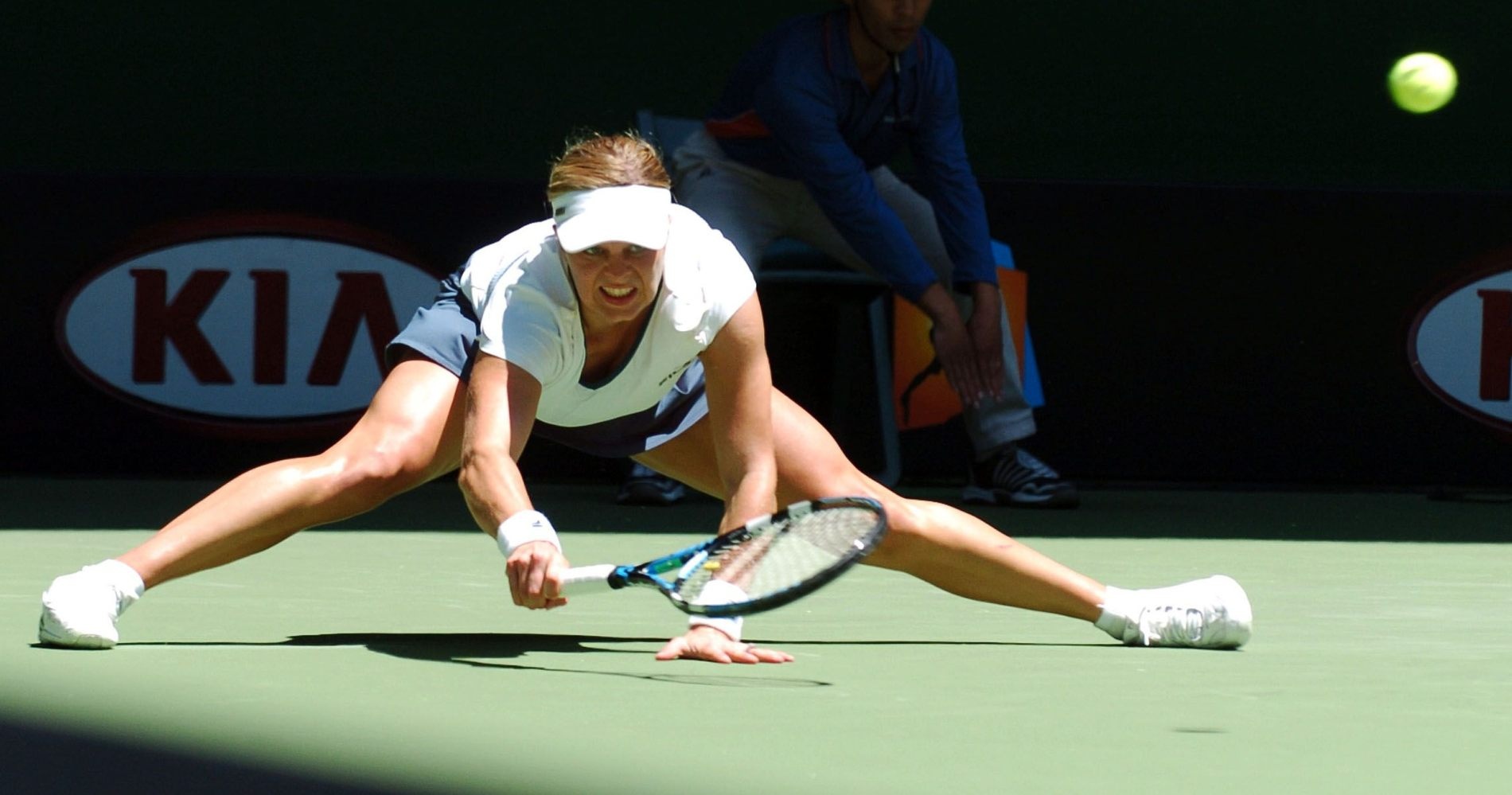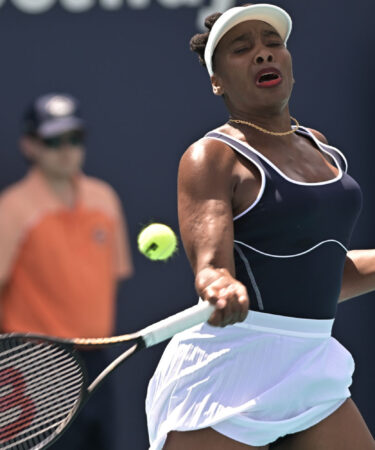March 17, 2001: The day Serena Williams won Indian Wells after controversy
Each day, Tennis Majors looks back at the biggest moments in the sport’s history. On March 17, 2001, Serena Williams beat Kim Clijsters for the Indian Wells title even though the crowd was against her following Venus Williams’ controversial withdrawal from the semi-finals.
 Serena Williams, On This Day
Serena Williams, On This Day
What happened exactly on that day
On this day, March 17, 2001, Serena Williams defeated Kim Clijsters in the Indian Wells final (4-6, 6-4, 6-2) despite facing a very unfriendly crowd which booed her and gave loud support to her opponent. The Indian Wells crowd thought that the semi-final match between Serena and her sister Venus Williams — from which Venus withdrew at the very last minute — was actually fixed by their father Richard. After this incident, it would take 14 years before the Williams sisters returned to Indian Wells.
The players : Serena Williams and Kim Clijsters
• Serena Williams, a rising star of world tennis, future megastar
Serena Williams, born in 1981, was the youngest of the Williams family. Her older sister Venus, at the start of her career in 1997, had declared that her main rival for world No 1 would be none other than Serena. At the time, the tennis experts did not know whether she was joking or just being provocative. They soon discovered how serious Venus was. In 1998, aged only 16, she beat several top 10 players, including world No 3 Lindsay Davenport in the quarter-finals of the Sydney Open (1-6, 7-5, 7-5) and reached the quarter-finals of several other events to end the season as world No 20. Her breakthrough year came in 1999.
She claimed her first title in Paris Coubertin, at the age of 17, defeating local player Amélie Mauresmo 6-2, 3-6, 7-6. In Miami, Serena defeated world No 1 Martina Hingis 6-4, 7-6 in the semi-final only to finish runner-up to Venus in the first ever all-sister final in tennis history. Following a disappointing French Open an injury forced to pull out of Wimbledon, but in summer she won a third tournament in Los Angeles and at the US Open she astonished the tennis world by claiming her first Grand Slam title — before her older sister, t0o — beating Hingis 6-3, 7-6 in the final. In 2000, although she failed to add another major title to her list of achievements, she reached the Wimbledon semi-finals (defeated by her sister 6-2, 7-6). In March of 2001, after she reached the Australian Open quarter-finals (defeated by Hingis 6-2, 3-6, 8-6), Serena was world No 10.
• Kim Clijsters, the rising teenager, future world No 1
Kim Clijsters, born in 1983, started competing on the main tour at the age of 16. She beat a top 10 player, Amanda Coetzer, for the first time at Wimbledon in 1999, a few months before claiming her first title at the Luxembourg Open — where she defeated Dominique Monami 6-2, 6-2 in the final. Clijsters finished the season 47th in the WTA rankings. In 2000, she added two more titles to her list of achievements, in Hobart (defeating Chanda Rubin 2-6, 6-2, 6-2 in the final) and in Leipzig — where she got the best of Elena Likhovtseva 7-6, 4-6, 6-4. Runner-up to Hingis in Filderstadt (6-0, 6-3), she started 2001 by reaching the fourth round at the Australian Open (lost to Davenport 6-4, 6-0). She arrived at Indian Wells as the world No 19.
The place: Indian Wells tennis garden
The history of the Indian Wells tennis event began in 1987, when the La Quinta tournament – under the impulse of Charlie Pasarell – outgrew its premises and had to move into a bigger location but without leaving California. The tournament had already become prestigious in La Quinta, but when it settled down in Indian Wells it became a part of the Grand Prix circuit.
The women’s event only settled there in 1992, and it was originally held one week before the men’s event. In 1993, the tournament became a part of the Super 9 category – which would later become the Masters Series and then the Masters 1000. In 1996, it became one of the few fully combined events on both the ATP and the WTA. Heading into 2001, its former women’s champions included Martina Navratilova, Steffi Graf, Monica Seles, Martina Hingis, and Lindsay Davenport.
The facts: Serena holds firm to win title
The story of the 2001 Indian Wells final actually began a few days before, right after Venus Williams defeated Elena Dementieva in the quarter-finals (6-0, 6-3), to set up a semi-final clash against her sister Serena.
Asked about her opinion about the outcome of the upcoming sister semi-final, the Russian responded, “I mean, I don’t know what Richard thinks about it. I think he will decide who’s going to win tomorrow.” That was a joke, obviously.
The rumour had started, but it didn’t draw much attention until Venus withdrew just four minutes before the match. Among a disappointed audience, the idea that Richard Williams had fixed the result was now appealing.
On March 17, 2001, Serena faced a promising 17-year-old player, Kim Clijsters. However, her toughest opponent on that day was not the talented Belgian but the rowdy crowd. Before she even entered the court, the audience had already booed Richard and Venus as they took place in the stands. As a response, the Williams father shook his fist at the public and called for a security guard.
In all this chaos, 19-year-old Serena faced an unexpected challenge, with — on top of a great opponent — a crowd cheering her mistakes. Quickly down 3-0, she slowly regained her composure, and even if she lost the first set she eventually took control of the match and finally prevailed 4-6, 6-4, 6-2.
“I’d like to thank everyone who supported me, and if you didn’t, I love you guys anyway,” Williams told the crowd during the trophy ceremony.
Williams made a total of 43 unforced errors to her opponent’s 31, but the match statistics were not the main topic of the press conference.
I don’t think mentally I was ready for that.
Serena Williams
“At first, obviously, I wasn’t happy,” Serena said, according to The New York Times. “I don’t think mentally I was ready for that. To be honest, what I literally did on a changeover, I prayed to God to help me be strong, not even to win, but to be strong, not listen to the crowd.”
“I won a big battle today mentally. I think a champion can come through…. How many people do you know who would go out and jeer a 19-year-old? Come on, I’m just a kid.”
Clijsters herself expressed her disapproval of the crowd’s attitude.
“She’s a very nice person. I don’t think it’s up to the crowd to put pressure on her.”
What next: the Williams sisters would not return until 2015
It would take 14 years before Serena Williams came back to compete at Indian Wells. In 2015, she would finally decide that it was time to move on despite the bad memories she had from the 2001 final.
This incident would not prevent the Williams sisters from achieving amazing feats. As their father had predicted, they would become No 1 and No 2 in the world and face each other in numerous major finals. Venus would claim seven Grand Slam titles in singles and 14 in doubles, partnering her sister. Serena would secure 23 Grand Slam crowns in singles, and one of her most amazing feats would be known as the Serena Slam — she would win four consecutive major titles in 2002 and 2003, each time defeating her sister Venus in the final.
In her peak year, 2003, Clijsters would become the first Belgian to reach world No 1. That year she competed in 21 singles events, reaching the semi-finals in all but one of them while advancing to 15 finals and winning nine titles with a record of 90–12. The only thing she didn’t manage to do in 2003 was claim a Grand Slam title, a feat she would only achieve at the 2005 US Open. Following her first retirement in 2007, Clijsters would come back to claim three additional major titles: the 2009 and 2010 US Open, and the 2011 Australian Open.
